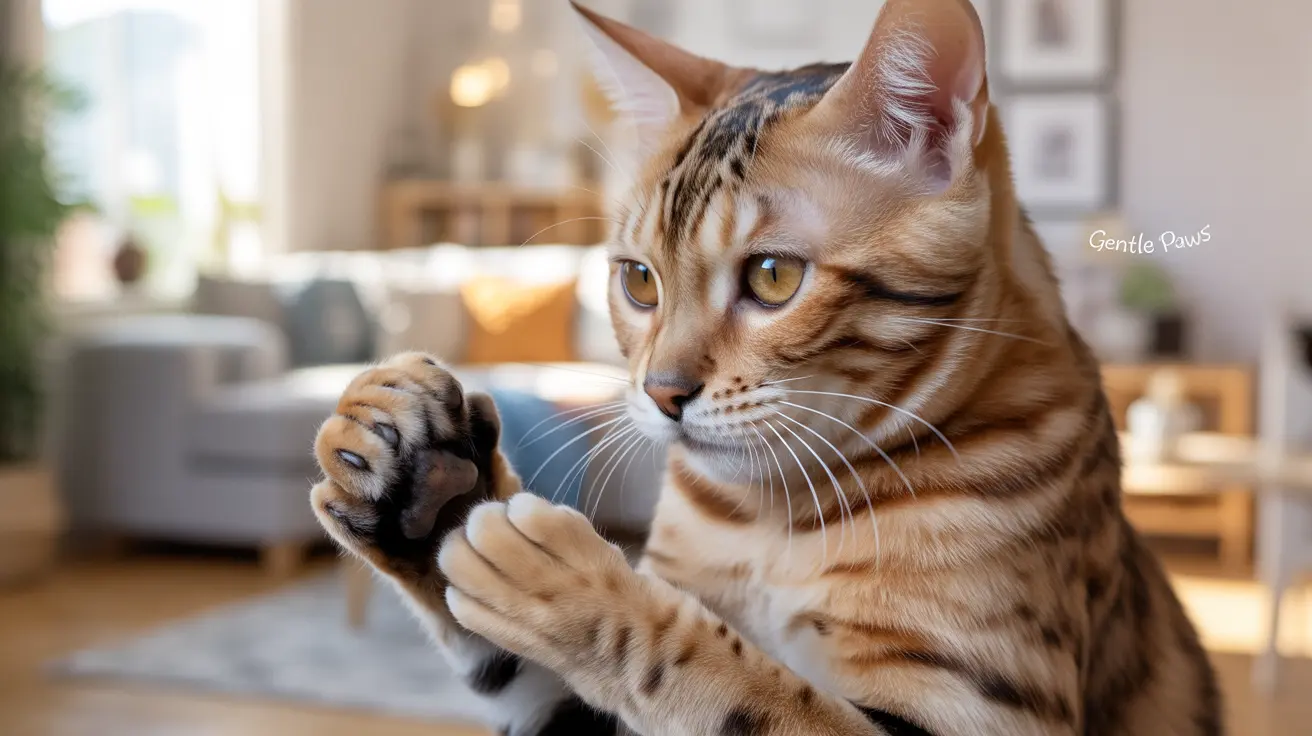When your feline friend's paw pads start peeling, it can be both concerning and confusing. Cat paw pad peeling is a common issue that can stem from various causes, ranging from simple environmental factors to more serious medical conditions. Understanding this condition is crucial for providing proper care and knowing when to seek veterinary attention.
In this comprehensive guide, we'll explore the various causes of peeling paw pads, how to identify the underlying issues, and what steps you can take to help your cat recover and prevent future problems.
Common Causes of Cat Paw Pad Peeling
Environmental Factors
Many cases of paw pad peeling are directly related to environmental conditions. Hot pavement during summer months can burn and damage paw pads, while winter's cold temperatures and de-icing chemicals can cause dryness and cracking. Indoor environments with low humidity can also contribute to pad deterioration.
Allergies and Irritants
Allergic reactions to environmental substances or food can trigger inflammation and excessive grooming, leading to pad damage. Common irritants include household cleaners, lawn chemicals, and certain types of litter.
Signs and Symptoms to Watch For
Physical Changes
- Flaking or peeling skin on the pads
- Redness or inflammation
- Cracks or fissures
- Unusual swelling
- Changes in pad color or texture
Behavioral Changes
- Excessive licking or chewing of paws
- Limping or favoring certain paws
- Reluctance to walk or play
- Signs of pain when walking
Treatment Options
Home Care
For minor cases, several home remedies can help:
- Gentle cleaning with warm water
- Application of pet-safe moisturizers
- Protecting paws from harsh surfaces
- Maintaining proper humidity levels indoors
Professional Treatment
Veterinary care may include:
- Prescription medications for infections or allergies
- Topical treatments for healing
- Systemic therapy for underlying conditions
- Bandaging when necessary
Prevention Strategies
Take these steps to protect your cat's paw pads:
- Regular paw inspections
- Limiting exposure to extreme temperatures
- Using pet-safe cleaning products
- Maintaining proper nail trimming
- Providing soft walking surfaces
Frequently Asked Questions
What are the most common causes of cat paw pad peeling and how can I identify them?
The most common causes include environmental factors (extreme temperatures, rough surfaces), allergies, infections, and autoimmune conditions. You can identify the cause by observing accompanying symptoms, timing of occurrence, and whether multiple paws are affected.
How can I treat my cat's dry, cracked, or peeling paw pads at home safely?
Safe home treatments include gentle cleaning with warm water, applying pet-safe moisturizers, and protecting paws from harsh surfaces. Always avoid human medications and consult your vet before using any treatments.
When should I take my cat to the vet for peeling or irritated paw pads?
Seek veterinary care if you notice severe peeling, bleeding, infection signs (swelling, discharge, odor), limping, or if the condition persists despite home care.
What is feline plasma cell pododermatitis (pillow foot) and how does it affect my cat's paws?
Pillow foot is an immune-mediated condition causing soft, swollen paw pads with potential ulceration. It typically affects multiple paws and may require long-term medical management.
How can environmental factors like weather and allergens contribute to my cat's paw pad problems?
Extreme temperatures, chemicals, and allergens can directly damage pad tissue or trigger inflammatory responses. Protection from these elements and maintaining appropriate indoor conditions can help prevent issues.
Conclusion
Cat paw pad peeling requires attention and proper care to ensure your feline companion's comfort and mobility. While some cases can be managed at home, others need professional veterinary care. Regular monitoring and preventive measures can help maintain healthy paw pads and catch potential problems early.






